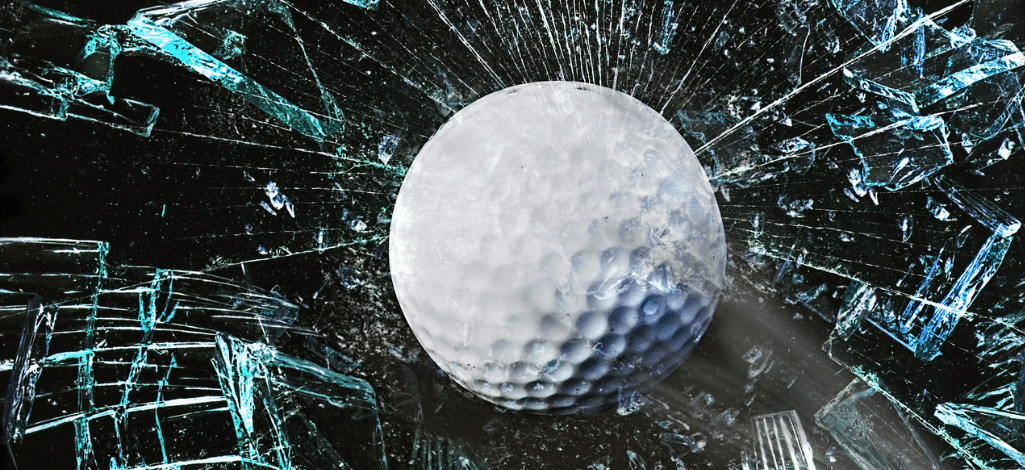The issue of errant golf balls has always been a concern for golf course owners and operators. The law has made it clear that golf course owners and operators have a duty to protect their neighbours from errant golf balls and to be aware of the potential damage. Taking proactive steps to mitigate the risk of damage caused by errant golf balls can help prevent lengthy and costly disputes down the road.
Limit your Liability
Canadian law is well established that golf course owners have a duty to reasonably maintain their property as to not unreasonably permit errant golf balls to enter neighbouring properties. If errant balls do escape, a court will consider if the neighbouring property has an actionable claim against the golf course in nuisance. In cases where golf course owners are found liable, they may be held accountable for the resulting damage under the tort of nuisance.
The Law of Nuisance
In its most basic form, the tort of nuisance is unreasonable interference with the enjoyment of one’s land. Where a nuisance is proven, the courts will help prevent unlawful conduct and award damages. A claim for nuisance contemplates more than a mere annoyance.
Linden, in Canadian Tort Law, 12th Edition, chapter 11 at page 569, defines nuisance as follows:
“Private nuisance may be defined as an unreasonable interference with the use and enjoyment of property. This may come about by physical damage to the land. The use of the term “unreasonable” indicates that the interference must be such as would not be tolerated by the ordinary occupier”.
In most instances, for a nuisance claim involving errant golf balls to succeed, a court will consider the characteristics of the neighbourhood, as well as the frequency and duration of the occurrence. Courts have found that a nuisance exists where it substantially interferes with one’s use or enjoyment of land and considering all of the surrounding circumstances the interference is unreasonable.
Case Law
Below is a summary of some cases that involve errant golf balls.
Segal v. Derrick Golf & Winter Club, 1977 CanLII 656 (AB QB) involved a case where, in 1972, over 200 balls had landed in the plaintiff’s property. The court found that the balls were a nuisance. The unpredictable nature of the sporadic interferences was considered a relevant factor, in addition to children not being able to play in the backyard. The golf club was found liable in nuisance and the plaintiff was awarded $3,000 in damages.
In Skobleniuk v. Eaglestar Golf Inc., 2006 BCPC 377 (CanLII), a judge found that it is not unreasonable for a property owner “located adjacent to a golf course” to expect “some” golf balls to land on their property. “Some”, however, did not mean 250 golf balls. The court defined “unreasonable” interference as something that would not be tolerated by the “ordinary occupier”. The plaintiff was awarded $4,000 in damages.
In Castle v. St. Augustine’s Links Limited [1922] 38 T.L.R. 615, cited in Transcona Country Club v. Transcona Golf Club, 2000 MBQB 22 (CanLII), a golf ball from the golf course hit the windshield of a taxi driving on the road parallel to the golf course and injured the driver. The court found that based on how the tee and hole were situated with respect to the road and the frequency with which balls were hit onto the road, the tee and hole constituted a nuisance entitling the injured plaintiff to damages.
In Baekhave v. Beach Grove Golf Club (1960) Ltd., 2019 BCCRT 1293, the plaintiff sued the Beach Grove Golf Club in damages for an errant golf ball that caused damage to her truck. The tribunal found that there was insufficient evidence in this case to establish a nuisance. The tribunal found that aside from the two videos, there was no other evidence to suggest the frequency with which golf balls from the golf club reached the road, or the seriousness of such prior interferences. The tribunal also found no evidence about the design of the course or any specific hole or tee in relation to the road.
In a recent decision in the Nova Scotia Small Claims Court, Fletcher v. The Links at Brunello, 2023 NSSM 14, the plaintiff sued the golf club for damages for errant golf balls. In 2019, a golf ball hit the plaintiff’s back wall and cracked some siding. In 2020, a golf ball went over the plaintiff’s house and landed in the driveway and made a dent in their truck. The court also stated that neighbouring properties were experiencing errant golf balls as well. The court held that although the risk of errant golf balls will never be reduced to zero, steps can be taken to reduce that risk to low numbers. Further, the court held that that a homeowner living adjacent to a golf course has a right to be compensated for actual damage by escaping golf balls. The court also went on to state that golf courses cannot claim to be totally unaware of the risk of damage caused by errant golf balls and that the harm is foreseeable. The court went on to state that golf courses should “answer for actual damage”. The golf club was found to be liable for the resulting damage. The court awarded the plaintiff $1,544.
Where does THIS leave us?
Fletcher seems to suggest that where there is resulting damage, golf courses will be liable no matter the frequency of the occurrence. However, it is important to note that Fletcher is a decision of the Nova Scotia Small Claims Court. The doctrine of stare decisis (meaning “stand by the decision”) requires courts follow to previous judgments, based on court hierarchy.
As explained in Halsbury’s Law of Canada- Civil Procedure, “a court is bound to follow the decisions handed down by another court, where an appeal lies from it to that other court”. So, as between provinces, decisions from small claims courts are not binding authority, nor are they binding on small claims courts within their own jurisdiction. Accordingly, Fletcher is not binding authority, even in Nova Scotia. Courts in other provinces, such as British Columbia, will continue to follow the precedent set by judges who are higher in the judicial hierarchy within the jurisdiction.
Who Is at Fault?
A common question we are asked from golf course owners is if they can sue the bad golfer. As stated in Fletcher, “there is no shortage of bad golfers, and even good golfers make bad shots”. In our experience, suing the bad golfer is not always the best course of action from a practical and business standpoint. From a business standpoint, golf courses risk losing business from the golfer. The damage in most cases has been a small monetary value. From a practical standpoint, golf courses would need to track down the specific golfer, which may be difficult to do.
Some golf courses have their patrons sign waivers to absolve the facility of any liability; however, the reality is that courts do not always uphold waivers. If waivers are ambiguous, any ambiguity will be construed against the golf course who prepared it. Enforcing a waiver also involves the club commencing a lawsuit against the golfer, which can be costly.
In most cases, it will be difficult for golf courses to completely absolve themselves from liability for errant golf balls where they fail to mitigate the known and foreseeable risks of potential damage.
Insurance Coverage
There is insurance available for errant golf balls. It is important to review your insurance policy to ensure you have coverage for errant golf balls. Having the right liability coverage is vital for golf course owners and operators. Similarly, it is important for golfers to carry a personal homeowner or tenant’s insurance policy in order to protect themselves from possible exposure.
Mitigating Factors
The following provides some guidance for golf courses to consider in preventing errant golf balls from landing in neighbouring properties and the resulting damage:
- Ensure there is proper netting in place. If there is netting in place and you are still noticing errant golf balls escaping, consider increasing the height of the netting.
- Consider re-orienting tee-off mats, reducing tee height, moving tee boxes, or redesigning holes in problem areas.
- Encourage your patrons to report errant golf balls through signage and verbal communication.
- Keep track of errant golf balls to identify problem areas.
- Implement an errant golf ball policy for staff. Create a reporting protocol. Once you notice specific patterns, take steps to rectify the problem.
Balancing Act
The law has made it clear that golf course owners have a duty to protect their neighbours from foreseeable errant golf balls and to mitigate the damage. In most cases, where a golf course is aware of errant golf balls and chooses not to take steps to mitigate the damage, they will likely be held liable for the damage.
For more information, or if you have a question about this article, please contact a member of our Professional Liability Practice Group.



